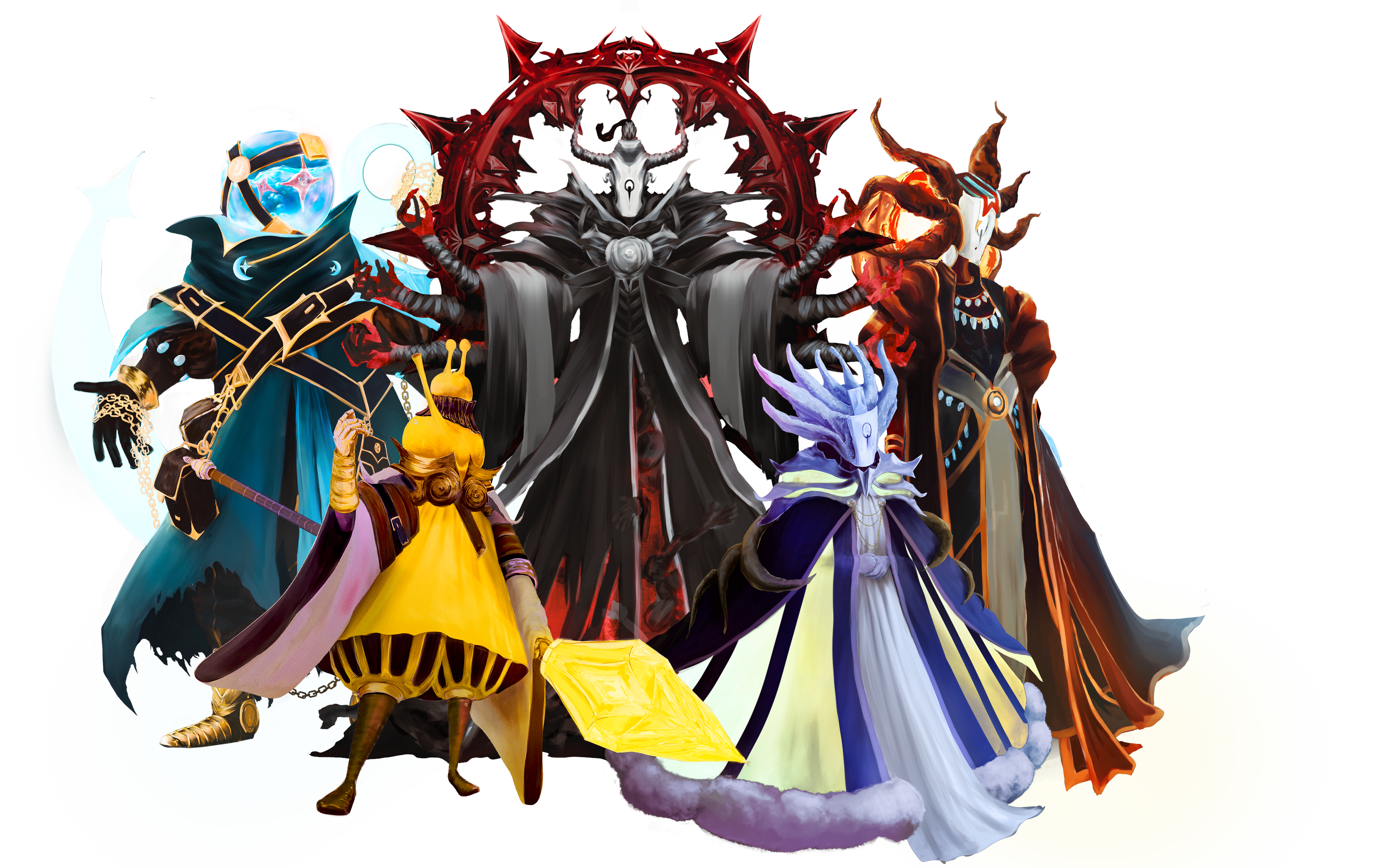How to Create Eye-Catching Art Thumbnails for Social Media
In today’s digital world, attention spans are shorter than ever. Creating eye-catching art thumbnails for social media is a vital skill for artists who want their content to stand out. Whether you’re showcasing digital paintings, speed art, tutorials, or commissions, your thumbnail serves as the first impression. A well-crafted thumbnail can mean the difference between high engagement and your post being overlooked.
Social media platforms like Instagram, TikTok, and YouTube are visually driven. This makes thumbnails one of the most important tools in your content strategy. But designing effective thumbnails isn’t just about creating something pretty; it’s about strategically crafting a visual that grabs attention, sparks curiosity, and invites engagement.
This guide will walk you through the core principles of thumbnail design, why they matter, and how you can master them to build your brand and grow your audience.
Why Thumbnails Matter for Artists
Thumbnails are more than decorative visuals, they are strategic assets. On social media, your thumbnail is often the first interaction viewers have with your content. Without an engaging thumbnail, even your most incredible artwork might fail to capture attention.
Here’s why thumbnails are essential for social media success:
1. Capture Attention Within Seconds
Social media platforms are a crowded and fast-paced landscape, where users are bombarded with a constant stream of content. In this environment, capturing a user’s attention is crucial. A bold and visually striking thumbnail can be the difference between a post being noticed or quickly scrolled past. By creating an image that is eye-catching and intriguing, you can encourage users to pause and engage with your content, rather than mindlessly scrolling through their feed. This extra moment of attention can be invaluable, as it allows you to showcase your message and potentially convert casual viewers into active participants.
2. Boost Engagement
Thumbnails with strong visual appeal lead to higher engagement rates. More likes, comments, and shares can increase your visibility and help you connect with a broader audience.
3. Improve Click-Through Rates (CTR)
Click-through rate (CTR) is a crucial metric that measures the effectiveness of your content’s thumbnail. When users see your thumbnail, CTR tells you how many of them actually click to view your full content. Platforms like YouTube and TikTok rely heavily on CTR as a key ranking signal, as it indicates the level of audience engagement. By creating high-quality, eye-catching thumbnails, you can increase your chances of getting more clicks, which in turn boosts your content’s visibility and discoverability within the platform’s algorithms.
4. Build Branding Consistency
A consistent style for your thumbnails reinforces your personal brand. Over time, viewers will recognize your content at a glance, fostering familiarity and trust.
Best Thumbnail Dimensions for Social Media
Creating thumbnails in the correct dimensions ensures clarity, sharpness, and compatibility across platforms. Using improper sizes can lead to blurry, cropped, or stretched thumbnails that fail to convey your message effectively.
Here’s a quick guide to thumbnail dimensions for top platforms:
| Platform | Recommended Thumbnail Size | Aspect Ratio |
|---|---|---|
| YouTube | 1280 x 720 pixels | 16:9 |
| Instagram Posts | 1080 x 1080 pixels | 1:1 |
| Instagram Reels | 1080 x 1920 pixels | 9:16 |
| TikTok | 1080 x 1920 pixels | 9:16 |
Pro Tip: Always save your thumbnails in high resolution (e.g., PNG or JPEG at 300 DPI). Low-quality images can appear pixelated when resized for larger screens.
The Psychology Behind Effective Thumbnails
Thumbnails work because they tap into how humans process visuals. The brain processes images 60,000 times faster than text, so your thumbnail needs to communicate your message immediately. Here are the psychological principles behind successful thumbnails:
1. High Contrast and Readability
Humans are naturally drawn to areas with high contrast. This applies to brightness, color, and font choices.
- Use contrasting colors to make your subject stand out from the background.
- Add a subtle glow or enhance the brightness around key elements to draw attention.
- Avoid cluttered backgrounds that distract from the main focus of the thumbnail.
Example: If your post features a character illustration, place a bold, light-colored border around the character to separate it from a darker background.
2. Color Psychology
Colors play a huge role in influencing emotions and driving action. Use color psychology to enhance your thumbnail’s impact:
- Warm colors (red, orange, yellow): These create excitement, urgency, and energy.
- Cool colors (blue, green, purple): These evoke calmness, professionalism, and creativity.
- Neon or vibrant colors: These increase visibility, especially on darker platforms like TikTok.
Example: A blue-themed background can suggest creativity and trust, while a bold red border can create urgency, encouraging viewers to click.
3. Focal Point Placement
The rule of thirds is a fundamental design principle that applies to thumbnails as well. Divide your thumbnail into a 3×3 grid and position the most important elements, like the focal point of your artwork or the text overlay, at one of the intersecting lines.
Why It Works: This placement draws the viewer’s eye naturally to the most critical part of the thumbnail.
Example: In a speed art video thumbnail, place the subject (e.g., the character you’re drawing) in the top left corner and the text in the bottom right for a balanced composition.
Design Strategies for an Effective Thumbnail
Creating a compelling thumbnail goes beyond aesthetic appeal. It’s about conveying your message clearly and instantly. Let’s explore some practical design strategies:
1. Use a Clear and Engaging Subject
Keep the focus on one main element, such as:
- A close-up of your digital painting.
- A character or subject from your artwork.
- Your face or a reaction if the content is tutorial-based.
Avoid: Overly complex compositions with too many competing elements, which dilute the impact of your design.
2. Add a Border or Outline for Emphasis
Adding borders or glow effects makes your thumbnail stand out against busy social media feeds.
- Use a thin neon border to give the thumbnail a polished look.
- Add a soft glow effect around the subject to emphasize its prominence.
3. Keep Text Minimal and Readable
Text can enhance your thumbnail by providing context, but it needs to remain legible and concise.
- Use large, bold fonts that are easy to read at smaller sizes.
- Limit text to 3-4 words to avoid clutter.
- Add shadows or outlines to make text stand out against bright or detailed backgrounds.
Examples of Effective Text:
- “New Art Drop!”
- “How to Draw Faces”
- “Speedpaint Tutorial”
4. Create a Series of Consistent Thumbnails
Consistency builds recognition. Use a uniform layout, font style, and color palette across all your thumbnails to establish a professional brand identity.
Example: If you use pastel colors and rounded text in one thumbnail, carry the same theme into others for cohesion.
Tools for Designing Thumbnails
You don’t need to be a design expert to create professional thumbnails. Here are some tools that make the process easier:
1. Canva
- A drag-and-drop tool with pre-designed templates.
- Ideal for beginners who want to create polished thumbnails quickly.
2. Adobe Photoshop
- Advanced editing capabilities for full creative control.
- Perfect for customizing colors, adding effects, and refining details.
3. Procreate
- Great for digital artists who want to incorporate hand-drawn elements into their thumbnails.
4. Figma
- A collaborative design platform for creating precise layouts.
Tip: Start with pre-made templates (available in Canva or Figma) to ensure your thumbnails are optimized for the right dimensions.
Now that you’ve mastered the fundamental design principles for creating compelling thumbnails, it’s time to take your strategy to the next level. In this section, we’ll dive into advanced techniques for testing, optimizing, and refining your thumbnails to maximize engagement and improve performance.
Testing and Optimizing Thumbnails
Not every thumbnail you create will perform equally well. Testing is essential to identify what works best for your audience and make data-driven improvements. Here are some proven methods for testing and optimizing your designs:
1. Perform A/B Testing
A/B testing, also known as split testing, involves comparing two versions of a thumbnail to see which one performs better. This method is particularly effective on platforms like YouTube, where you can test thumbnails against the same video.
How to Conduct A/B Testing:
- Create two variations of a thumbnail with slight differences (e.g., color scheme, text placement, or subject focus).
- Upload each thumbnail at different times and track engagement metrics like click-through rate (CTR).
- Keep other variables (title, description, etc.) consistent to isolate the thumbnail’s impact.
Example:
- Thumbnail A: A close-up of a character with bold yellow text.
- Thumbnail B: A wider composition with a cooler blue color palette.
Track which version drives more clicks.
2. Monitor Click-Through Rates (CTR)
CTR is one of the most important metrics for evaluating thumbnail performance. It measures the percentage of viewers who click on your content after seeing the thumbnail.
How to Track CTR:
- YouTube Analytics: Check the “Impressions Click-Through Rate” for each video.
- Instagram Insights: Review impressions, profile visits, and engagement metrics for posts.
- TikTok Analytics: Analyze the view count and engagement rates for videos.
Pro Tip: A good CTR varies by platform, but anything above 5-10% on YouTube is considered strong.
3. Gather Feedback from Your Audience
Your audience can provide valuable insights into what they find engaging. Use polls and surveys to involve them in the design process.
How to Get Feedback:
- Use Instagram Stories to post two thumbnail options and ask followers to vote on their favorite.
- Create a YouTube Community poll with thumbnail variations for an upcoming video.
- Ask open-ended questions like: “What catches your eye in a thumbnail?”
Example Question:
“Do you prefer bold text or minimalist designs in thumbnails? Let me know in the comments!”
Advanced SEO Strategies for Thumbnails
While thumbnails are primarily a visual element, they also play a role in search engine optimization (SEO). By optimizing your thumbnails, you can improve both visibility and performance across platforms.
1. Add ALT Text to Thumbnails
ALT text is a description added to images for accessibility and SEO purposes. It helps search engines understand the content of your thumbnails.
How to Write Effective ALT Text:
- Be descriptive and include relevant keywords.
- Keep it short but informative.
Examples:
- “High-contrast art thumbnail featuring a fantasy character for Instagram.”
- “Bright YouTube thumbnail for digital painting speed art tutorial.”
2. Use Descriptive File Names
File names also influence SEO. Instead of saving your thumbnail as IMG123.jpg, use a keyword-rich name that reflects the content.
Examples of Optimized File Names:
art-thumbnails-social-media.jpgdigital-art-tutorial-thumbnail.png
3. Compress Images for Faster Load Times
Large image files can slow down your website or post loading time, which negatively impacts user experience and SEO rankings.
Tools for Compression:
- TinyPNG: Reduces file size while maintaining quality.
- ShortPixel: Automatically compresses images uploaded to WordPress.
Pro Tip: Keep thumbnail file sizes under 1MB for optimal performance.
4. Leverage Schema Markup
Schema Markup is structured data that helps search engines understand your content. Adding schema to your posts or videos improves the chances of your thumbnails appearing in rich results.
How to Add Schema for Thumbnails:
- Use SEO plugins like Rank Math or Yoast to include thumbnail URLs in structured data.
- Include properties like
"thumbnailUrl"in your JSON-LD schema for videos or posts.
Case Studies: Successful Thumbnail Examples
Let’s analyze thumbnails from successful artists and creators to identify what makes them effective:
1. Loish (Instagram)
- Thumbnail Style: Loish uses vibrant colors and close-up details of her illustrations to create intrigue.
- Key Features:
- High contrast between the character and the background.
- Minimal text or no text, letting the art speak for itself.
- Takeaway: Focus on the most visually striking part of your artwork to draw attention.
2. Ross Draws (YouTube)
- Thumbnail Style: Ross consistently uses bold, saturated colors and a central subject. His thumbnails often feature his process (e.g., speed painting).
- Key Features:
- Clean compositions with clear focal points.
- Text that enhances the context, such as “Speedpaint Tips.”
- Takeaway: Use thumbnails to highlight both the final result and the artistic process.
3. TikTok Artists
- Thumbnail Style: TikTok creators often use neon borders and dynamic effects to grab attention in vertical formats.
- Key Features:
- Bright outlines around characters or text.
- Simple layouts optimized for mobile viewing.
- Takeaway: Glow effects and vertical compositions are especially effective on mobile platforms.
Common Mistakes to Avoid
Even skilled artists can fall into these common thumbnail design pitfalls. Avoiding these mistakes will ensure your thumbnails are polished and professional:
1. Overcrowding the Design
Too many elements can overwhelm the viewer and make the thumbnail look messy.
- Solution: Focus on one primary subject and use negative space to balance the composition.
2. Using Illegible Fonts
Thin, small, or overly decorative fonts can be hard to read, especially on mobile devices.
- Solution: Stick to bold, sans-serif fonts like Bebas Neue or Montserrat.
3. Ignoring Mobile Optimization
Remember, most users view thumbnails on mobile devices. If your design isn’t legible at a small size, it won’t perform well.
- Solution: Test your thumbnails on a phone before publishing to ensure readability.
Conclusion
Designing art thumbnails for social media isn’t just about creating visually appealing images, it’s about understanding your audience, leveraging psychological principles, and testing your designs to achieve maximum impact.
Key Takeaways:
- Use bold colors, high contrast, and simple layouts to grab attention.
- Optimize thumbnails for mobile by testing readability on smaller screens.
- Incorporate ALT text, file naming, and schema markup to improve SEO.
- Analyze engagement metrics like CTR and use A/B testing to refine your designs.
A well-designed thumbnail can transform your content from overlooked to viral. Start applying these techniques today and see the difference in your engagement and growth.
What’s your go-to strategy for creating thumbnails? Share your tips in the comments below!






Leave a Reply